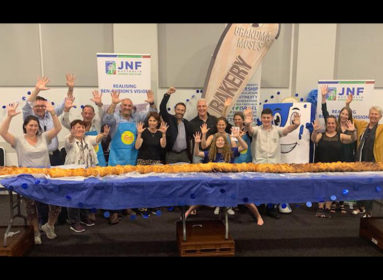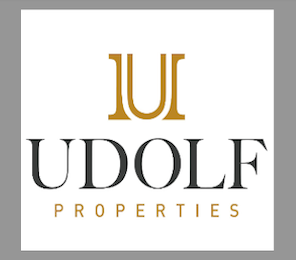
By Shlomo Riskin
“And let them make Me a Sanctuary that I may dwell among them. “ Exodus 25:8
What does it mean for God to dwell among the people? Does this not sound anthropomorphic, as if God were in human form dwelling on our street? And would the concept of a dwelling place for the divine not have been more appropriately expressed with a verse saying: “And let them make Me a Sanctuary that I may dwell in it”? Moreover, what is the strange textual link between the Sanctuary and Shabbat? This portion and the following one, Tetzaveh, deal with the Sanctuary. The third portion of the sequence, Ki Tissa, suddenly features a ringing declaration to keep Shabbat (Ex. 31:14), apropos of nothing. What is the relationship between the Sanctuary and Shabbat?
According to the Talmud,* the aspect of Shabbat that is intimately linked to the construction of the Sanctuary is the fundamental definition of precisely which activities are prohibited on Shabbat. Similarly, in the portion of Ki Tissa, in the midst of God saying the following to Moses about Bezalel the great architect of the Sanctuary, …whom I have filled with the spirit of God in wisdom and in understanding and in knowledge and in all manner of work- manship. Exodus 31:3
The Torah suddenly moves from the Sanctuary to Shabbat:
But verily you shall keep My Sabbath, for it is a sign between Me and you throughout your generations, that you may know that I am the Lord who sanctifies you…Exodus 31:14
Aside from the general declaration forbidding creative activity (melakha) on Shabbat (Ex. 20:10), the Written Torah is virtually silent on specifically what is included under the rubric of creative activity. By virtue of the fact that an additional Shabbat injunction appears precisely within the context of constructing the Sanctuary, the sages derived the definition of creative activity or “work” from the different categories of labor involved in the construction of the Sanctuary. They taught that whatever was involved in the construction of the Sanctuary is forbidden on Shabbat.
From a traditional perspective, one might therefore explain the linkage by saying that the Sanctuary expresses sanctity of space and Shabbat expresses sanctity of time. Sanctity of time is on a higher level than sanctity of space, so the Sanctuary cannot be built on Shabbat and all the activities necessary for the building of the Sanctuary became the paradigm for prohibited Shabbat activity.
But let us look more deeply into the activities forbidden on Shabbat and I believe we shall discover an even more profound linkage between the Sanctuary and Shabbat. The Mishna (Shabbat 7:2) lists thirty-nine forbidden creative activities, beginning with seeding and plowing – basic agricultural activities. On the surface, there seems to be little relationship between these activities and the building of the Sanctuary. Rashi suggests that the initial group is related to the planting of herbs whose dyes were used for the Sanctuary curtains. However, if this is the case, then the eleventh listed category, baking, poses a difficult problem. According to Rashi’s interpretation, it is cooking rather than baking that should have been included; after all, extracting the different ingredients needed to dye the linens required the cooking or the boiling of the herbs – not baking.
The Talmud* explains that baking replaced cooking because the author of the Mishna, R . Yehuda HaNasi, wanted to list the processes involved in the manufacture of bread; hence the Mishna lists baking rather than cooking. This talmudic response may very well be used to shed a fascinating light on all of the thirty-nine activities. If the first group of forbidden activities in the Mishna is to be looked upon from the perspective of bread manufacture, then the next grouping of prohibited activities centers around clothing manufacture, the third around leather manufacture and the fourth around building construction.
From this perspective, R. Yehuda HaNasi, the compiler of the Mishna, is adding another dimension to the prohibited Sabbath activities: Not only are they the activities involved in constructing the Sanctuary, but they are also the activities involved in producing food, clothing and shelter. He is informing us that although the human pursuit of food (bread, the “staff of life”), clothing and shelter (leather may be used for garments, shoes and tents) is legitimate and even mandatory for physical survival and certainly appropriate for the weekdays. Even animals require food and some form of protective clothing from the elements and shelter! The Shabbat, however, is to be dedicated to God. The Shabbat is to be sanctified for the soul and the mind. The Shabbat is the means to the end for which God created human beings above animals: to catapult us into more exalted and spiritual realms of involvement. Shabbat is the key to essence and not mere existence!
The story is told that the famed Hassidic Rebbe Levi Yitzhak of Berditchev once saw a Jew running very quickly. “I am running to make my living,” explained the harried businessman. “But perhaps in the process you are losing your life,” remonstrated the rebbe.
Indeed, the biblical explanation of the divine gift of desert manna teaches us that…not by bread alone does the human being live but by that which comes forth from God’s mouth does the human being live. Deuteronomy 8:3
Targum Onkelos (in the more precise readings of the text) translates the passage thus:
Not by bread alone is the human being meant to exist [kayam], but by that which comes forth from God’s mouth is the human being meant to live [hayei]. Onkelos on Deuteronomy 8:3
“Existence” (kiyum) refers to the physical necessities of food, clothing and shelter, while “life” (hayim) is the purpose of human creation, the fellowship with God which teaches us to emulate His traits of compassion, graciousness, tolerance and truth, the hallmarks of His essence. The Sabbath is given as a day in which we can free ourselves from the “rat-race” pursuit of a living, and dedicate ourselves to the more human pursuit of a life in the context of sacred time, “time off ” which is really “time in,” time dedicated to family, to Torah, and to God.
The building of the Sanctuary is the preparation, the means, just as the six days of the week are days of preparation, the means. The Sanctuary and the Sabbath are the goal, the purpose. To slightly change the apt phrase of Rabbi Abraham Joshua Heschel, the Sabbath is our Sanctuary in time, and the Sanctuary is our Sabbath in space. The days of the week are not yet holy time, whereas the Sabbath is a foretaste of the world to come. The world is not yet perfect, and we must transform it into a Sanctuary in which God and humanity can dwell together.
Once we understand that the Sanctuary and the Sabbath are parallel, we can readily see the similarity in language between the two. The Hebrew root khl (vayekhulu, vatekhel, to complete) and the Hebrew noun melakha (labor) appear almost exclusively in the two contexts of the Sabbath and the Sanctuary. Also, there are key verses in each context that are almost identical (for example, Genesis 1:31, Exodus 39:43). The biblical goal is for all space to become Sanctuary, all time to become Sabbath.
Rabbi Shlomo Riskin is founder and rosh yeshiva of Ohr Torah Stone and founding rabbi of Efrat, Israel.








 Southern New England Jewish Ledger
Southern New England Jewish Ledger









